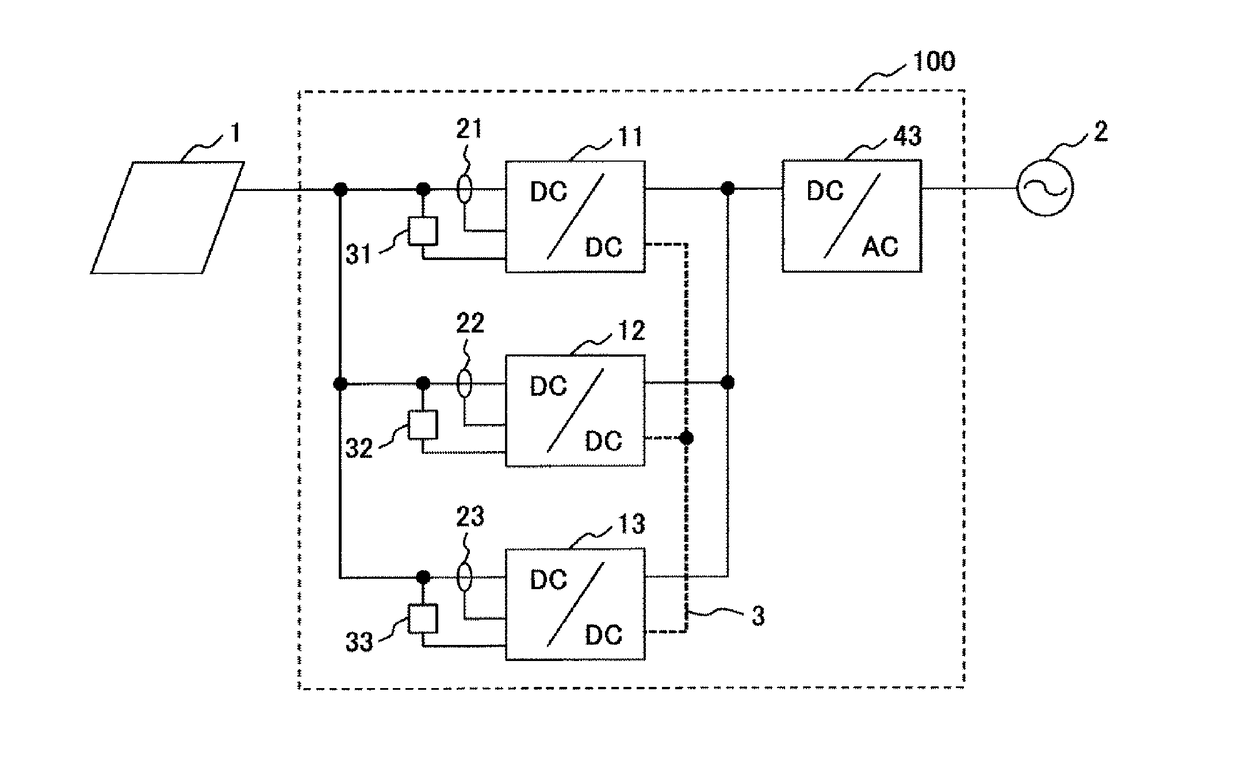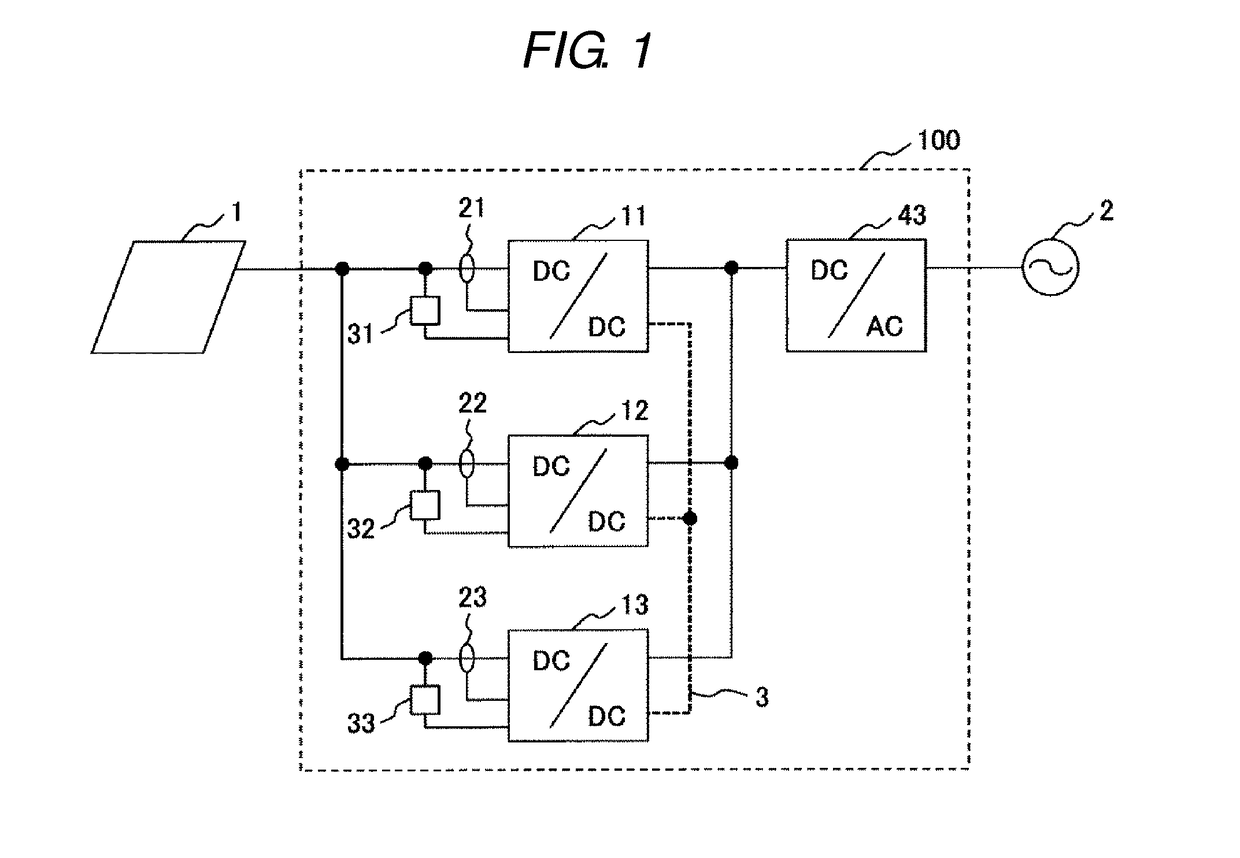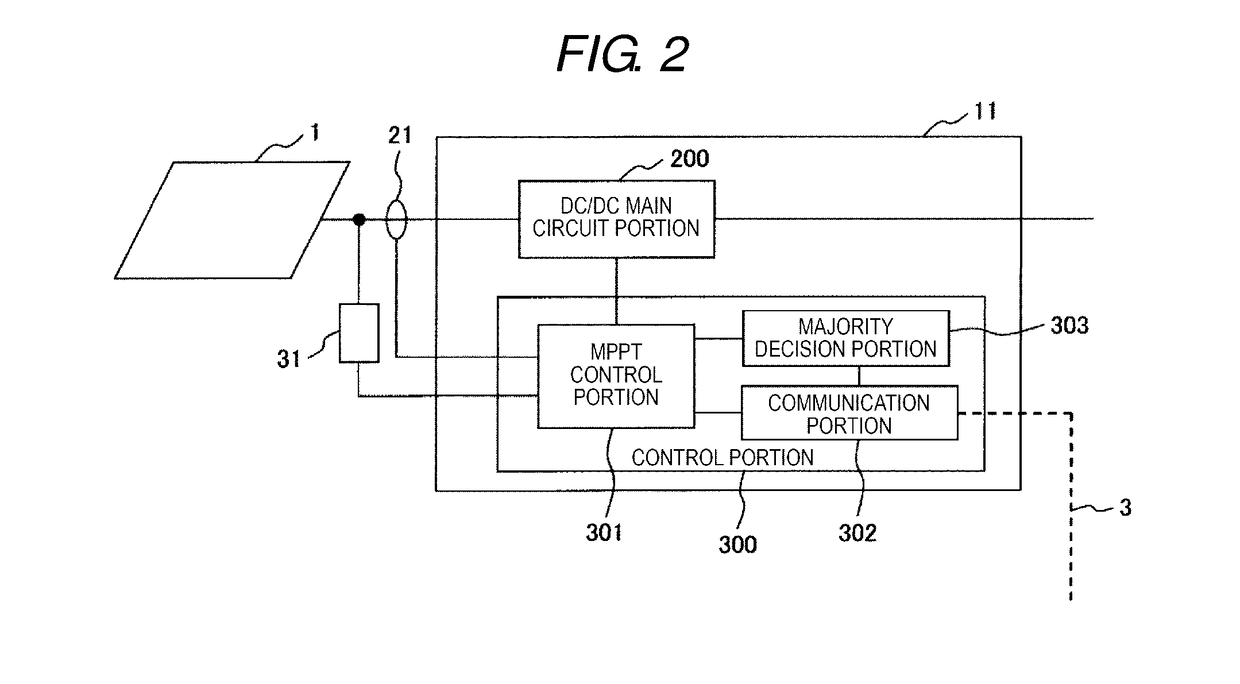Power converter
a power converter and converter technology, applied in the direction of electric variable regulation, process and machine control, instruments, etc., can solve the problems of lowering reliability and difficulty in performing and achieve the effect of improving the reliability of the maximum power point tracking control
- Summary
- Abstract
- Description
- Claims
- Application Information
AI Technical Summary
Benefits of technology
Problems solved by technology
Method used
Image
Examples
embodiment 1
[0021]FIG. 1 is a schematic configuration diagram of a power converter of Embodiment 1 of the invention.
[0022]As illustrated in FIG. 1, a DC power is input into a power converter 100 from a solar cell 1 and the power converter 100 outputs an AC power to an AC system 2. The power converter 100 includes DC-DC converters 11 to 13 which are connected in parallel, an inverter 43 which is connected to ends thereof, current sensors 21 to 23 which respectively detect input currents of the DC-DC converters 11 to 13, voltage sensors 31 to 33 which detect input voltages, a communication line 3 for communicating between the DC-DC converters 11 to 13.
[0023]The DC-DC converters 11 to 13 include the maximum power point tracking (hereinafter, referred to as MPPT) control units that control a voltage and a current that are an operating point of the solar cell 1 so as to take out a maximum power from the solar cell 1. The DC-DC converters 11 to 13 supply the DC power to the inverter 43. In addition, ...
embodiment 2
[0058]FIG. 5 is a schematic configuration diagram of a power converter of Embodiment 2 of the invention.
[0059]As illustrated in FIG. 5, a DC power is input into a power converter 101 from a solar cell 1 and the power converter 101 outputs an AC power to an AC system 2. The power converter 101 includes converters 64 to 66 which are connected in parallel and a communication line 4 for communicating between the converters 64 to 66. The converters 64 to 66 respectively include DC-DC converters 14 to 16, inverters (DC-AC converters) 44 to 46 which are connected rear stages thereof, current sensors 24 to 26 which detect an input current of each of the converters 64 to 66, voltage sensors 34 to 36 which detect the input voltages, and control portions 54 to 56.
[0060]The control portions 54 to 56 of the converters 64 to 66 include MPPT control portions for taking out a maximum power from the solar cell 1. The MPPT calculation is performed to maximize the input power of each of the converters...
PUM
 Login to View More
Login to View More Abstract
Description
Claims
Application Information
 Login to View More
Login to View More - R&D
- Intellectual Property
- Life Sciences
- Materials
- Tech Scout
- Unparalleled Data Quality
- Higher Quality Content
- 60% Fewer Hallucinations
Browse by: Latest US Patents, China's latest patents, Technical Efficacy Thesaurus, Application Domain, Technology Topic, Popular Technical Reports.
© 2025 PatSnap. All rights reserved.Legal|Privacy policy|Modern Slavery Act Transparency Statement|Sitemap|About US| Contact US: help@patsnap.com



